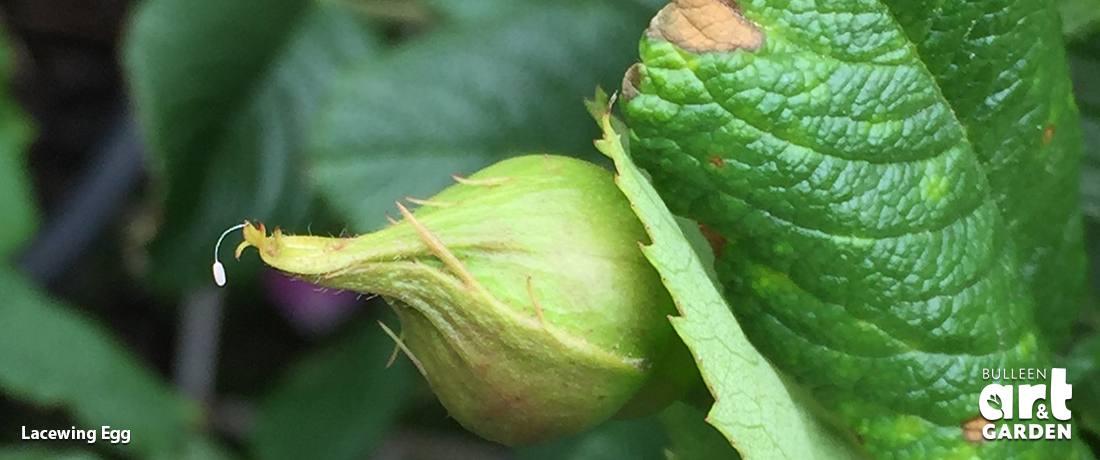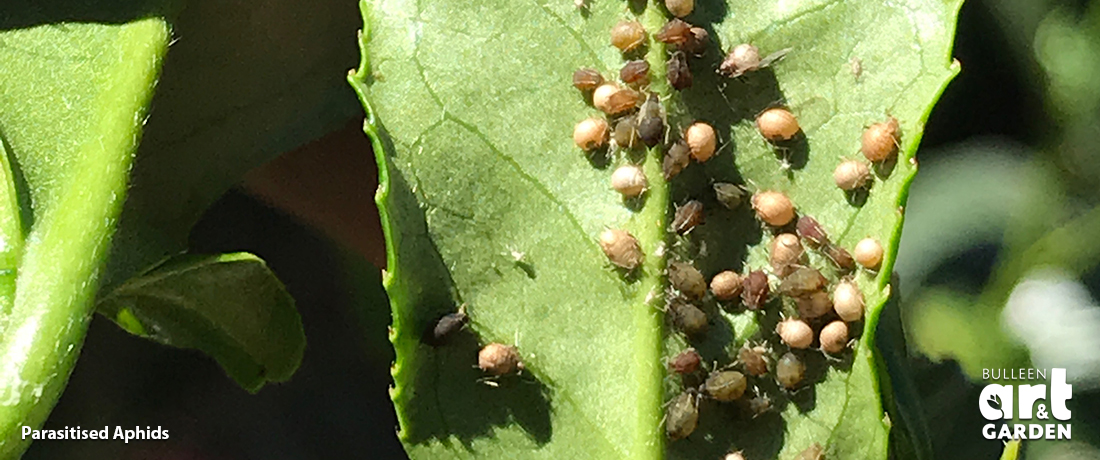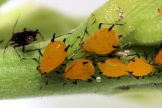
A healthy garden is full of life, from deep in the soil to the tree tops there should be fungi, bacteria, spiders, insects, worms, and innumerable other living creatures. These all cohabit in a generally harmonious way. Sometimes, however, a problem arises and the balance is temporarily upset. Reaching for an insecticide spray when aphids appear on your tender rose buds will often make the problem worse in the long run. Most insecticides are not prejudiced, they will kill everything, both the aphids and their natural predators.
Another way is to release natural predators and wait. As aphid numbers build up, so do their predator numbers and a liveable natural balance is achieved. Alternatively, you can provide an environment that encourages natural predators into your garden as permanent residents, this will often prevent pest numbers building sufficiently to be problematic in the first instance, reducing the need to take any action.

Most beneficial insects in your garden are Australian natives. They can act as pollinators, and/or they predate on garden pests. Insects and plants evolved together, so planting a wide variety of native plants to provide habitat and food encourages those native insects to stay in your garden. The addition of an insect hotel will also help to provide habitat for native insects.
Native beneficial insects are naturally around, but some are also commercially available. These include:

Ladybirds
There are 250 known species of ladybirds in Australia, and most of them are predators. Get to recognise their larval stage, as it is this stage that is often the most ferocious predatory stage of the ladybirds. Commercially available ladybirds include:
Australian Spotted Ladybird (Harmonia octomaculata)
Common Spotted Ladybird (Harmonia conformis)
Cryptolaemus montrouzieri – good predator of mealy bugs and scale, including cottony cushion scale
Lindorus lophanthae: both adult ladybird and larva feed on scale insects at all stages of their development. Tolerates a wide range of conditions.

Other native predatory insects
Green Lacewing (Mallada signatus). Excellent general predator in the larval stage. The adults feed on nectar, pollen, and aphid honeydew.
Brown Lacewing (syn. Tasmanian Lacewing) (Micromus tasmaniae). One of the few predators active in early spring, both larva and adults are predators, preferring aphids, but also eating small caterpillars, mites and moth eggs. (To support a population, plant some Wallaby grasses, Rhytidosperma sp., where they breed)

Parasitising wasp Trichogramma carverae – very useful against codling moth and light brown apple moth. Parasitic wasps are predators of eggs and larvae of many different pests from aphids, scale and mealybugs, to cabbage caterpillars and lawn curl grubs.

Good native pollinators include the Blue Banded Bee, famous for its buzz pollination – especially effective for tomatoes, and potentially for other vegetable crops.
The native honey bee (Tetragonula carbonaria) is a small, stingless bee that is vital in the pollination of crops such as macadamias, but only found north of Bega in NSW.

Hover flies are important pollinators, but their larval stage is a formidable predator of aphids in your garden, each larvae eating hundreds of aphids before pupating. They are a win-win at all stages of their life cycle.
To keep these industrious little workers in your garden, you need to provide for all stages of their life cycles. One stage involves eating aphids and other pests, so that is easy, but if the adult eats nectar or pollen, or needs to nest in small holes, and nothing is readily available, then your new best friend will desert you for greener pastures. So include nesting areas like leaf litter, wallaby grass, or even an insect hotel, and food sources across the seasons.
A mixture of native wallaby grass for habitat (excellent for native brown lacewings amongst others) and flowering plants with different flowering seasons and shapes, open daisy types, Pea flowers, tubular correas, acacia blossom etc., will support a variety of native insects across the year. At this stage it is recommended that you include straight species rather than just the highly bred cultivars. It is unknown if the cultivars have the same pollen and nectar quantities and if they are as attractive to native insects, possibly yes, possibly no.
If you need a start with which Australian natives to use, and you live in Victoria, look at:
Acacia (various species)
Arthropodium strictum
Arthropodium milleflorum
Rhytidosperma sp.
Bulbine bulbosa
Bursaria spinosa
Correa sp.
Brachyscome multifida
Correa reflexa
Epacris gunnii
Epacris impressa
Eucalyptus (various species)
Grevillea alpinia
Grevillea rosemarinifolia
Indigophora australis
Prostanthera rotundifolia
Stylidium armeria, S. graminifolium
Themeda triandra
Thryptomene (any species)





